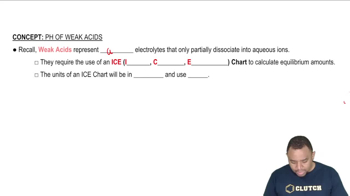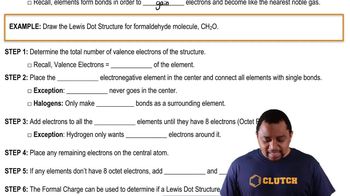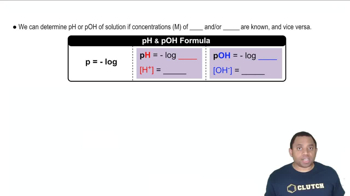Here are the essential concepts you must grasp in order to answer the question correctly.
Weak Acids and Their Dissociation
Weak acids partially dissociate in solution, establishing an equilibrium between the undissociated acid and its ions. The acid dissociation constant (Ka) quantifies this equilibrium, indicating the strength of the acid. A lower Ka value signifies a weaker acid, which is crucial for understanding how the acid behaves in a reaction with a strong base like NaOH.
Recommended video:
Neutralization Reactions
Neutralization reactions occur when an acid reacts with a base to form water and a salt. In this case, the weak acid reacts with NaOH, a strong base, leading to the formation of water and the conjugate base of the weak acid. The stoichiometry of the reaction is essential for determining the amount of acid neutralized and, subsequently, the molar mass of the weak acid.
Recommended video:
Lewis Dot Structures: Neutral Compounds
pH and Concentration Relationships
The pH of a solution is a measure of its hydrogen ion concentration, which is critical for understanding the behavior of acids and bases. The pH can be calculated using the formula pH = -log[H+]. In this scenario, the measured pH of 4.25 allows for the determination of the concentration of hydrogen ions, which can be used to find the amount of weak acid present in the solution after dilution.
Recommended video:




